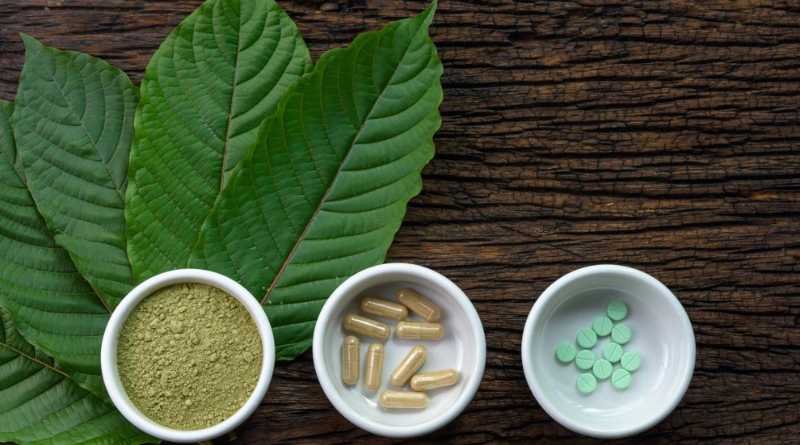Mitragyna speciosa, commonly known as kratom, has been a topic of growing interest in recent years, especially regarding its potential effects on mental health. This tropical tree native to Southeast Asia has been used traditionally for centuries, but modern science is now starting to uncover its complex pharmacology and potential benefits. This article delves into the ways kratom might impact mental health, considering both the promising aspects and the concerns.
The Historical and Cultural Significance of Kratom

Kratom has a long history in Southeast Asian countries like Thailand, Indonesia, Malaysia, and Papua New Guinea. Traditionally, the leaves were chewed or brewed into a tea by laborers to combat fatigue, alleviate pain, and boost mood. Its use was deeply embedded in the local cultures, often associated with social and medicinal practices. The indigenous populations valued kratom for its stimulant effects at low doses and its sedative effects at higher doses, making it a versatile herb for various ailments.
In modern times, kratom’s reputation has extended beyond its native regions. As globalization increased, so did the interest in alternative and herbal medicines. Kratom found its way into the Western world, where it is now sold in various forms, including powders, capsules, and extracts. However, its rise in popularity has also brought about regulatory scrutiny and debate over its safety and efficacy.
The Active Compounds and Their Effects
The primary active compounds in kratom are alkaloids, with mitragynine and 7-hydroxymitragynine being the most significant. These alkaloids interact with the brain’s opioid receptors, which is where much of the controversy and interest in kratom’s effects on mental health stems from.
Mitragynine: The Versatile Alkaloid
Mitragynine is the most abundant alkaloid in kratom leaves. It acts as a partial agonist at the mu-opioid receptors, which means it can provide pain relief similar to opioids but is generally considered less potent. This interaction can also lead to mood enhancement and reduced anxiety. Many users report feeling more relaxed and content after consuming kratom, attributing these effects to mitragynine.
7-Hydroxymitragynine: Potency and Risks
7-Hydroxymitragynine, though present in smaller quantities, is significantly more potent than mitragynine. It has a higher affinity for the opioid receptors, which can lead to more profound effects on mood and pain relief. However, its potency also raises concerns about dependency and addiction. While kratom is not classified as an opioid, its interaction with opioid receptors has led to debates about its safety, especially with long-term use.
Potential Benefits for Mental Health

Given its pharmacological profile, kratom has been touted for several potential mental health benefits. However, it’s important to approach these claims with a balanced perspective, considering both anecdotal evidence and scientific research.
Alleviating Anxiety and Depression
One of the most common reasons people use kratom is to manage symptoms of anxiety and depression. Users often describe a sense of calm and well-being after taking kratom, which can be attributed to its interaction with neurotransmitter systems in the brain. By modulating the activity of serotonin and dopamine, kratom may help improve mood and reduce anxiety. Some studies and surveys suggest that kratom could be an alternative for those who do not respond well to conventional antidepressants.
Enhancing Mood and Energy
At lower doses, kratom acts as a stimulant, providing a boost in energy and enhancing mood. This makes it appealing for individuals dealing with fatigue and low motivation, which are common symptoms of depression. The increased energy and improved outlook can contribute to better mental health overall, as individuals feel more capable of handling daily tasks and stressors.
Pain Management and its Psychological Impact
Chronic pain is often accompanied by mental health issues such as anxiety and depression. Kratom’s analgesic properties can help manage pain, which in turn can have a positive impact on mental health. By alleviating pain, individuals may experience improved mood and reduced stress, contributing to a better quality of life.
Concerns and Risks
Despite the potential benefits, there are significant concerns regarding kratom’s safety and potential for abuse. Understanding these risks is crucial for anyone considering kratom for mental health purposes.
Risk of Dependency and Withdrawal
Kratom’s interaction with opioid receptors raises the potential for dependency and withdrawal symptoms. While many users do not experience severe problems, some report withdrawal symptoms similar to those of opioids, including irritability, mood swings, and cravings. This risk underscores the importance of using kratom responsibly and being aware of one’s consumption patterns.
Lack of Regulation and Quality Control
In many parts of the world, kratom is not regulated, leading to concerns about the purity and quality of products on the market. Contaminated or adulterated kratom can pose significant health risks. Without proper regulation, consumers may be exposed to harmful substances or inaccurate labeling, which can exacerbate the risks associated with kratom use.
Limited Research and Clinical Evidence
While anecdotal reports and preliminary studies are promising, there is a lack of robust clinical research on kratom’s long-term effects and efficacy for mental health. Most studies have been small-scale or based on self-reported data, which can be biased. More comprehensive clinical trials are needed to fully understand kratom’s impact on mental health and to establish safe usage guidelines.
Legal Status and Ongoing Debates
The legal status of kratom varies widely across the globe, reflecting the ongoing debates about its safety and benefits. In some countries, kratom is banned or heavily regulated due to concerns about abuse and health risks. In others, it remains legal and is sold as a dietary supplement.
In the United States, for example, kratom’s legal status is complex and varies by state. The Food and Drug Administration (FDA) has expressed concerns about its safety, leading to seizures of kratom products and warnings to consumers. However, many advocates argue that kratom is a valuable tool for managing pain and mental health issues, calling for more research and regulation rather than outright bans.
The Path Forward: Responsible Use and Research
For those considering kratom for mental health, responsible use and staying informed are key. Here are some guidelines to consider:
Start with Low Doses
Given the variability in kratom’s effects, it’s advisable to start with low doses to gauge its impact on your body and mind. This approach can help minimize the risk of adverse effects and dependency.
Monitor Usage and Effects
Keep track of your kratom use and its effects on your mental health. Note any changes in mood, anxiety levels, or physical symptoms. This can help you determine whether kratom is beneficial and identify any potential issues early on.
Seek Professional Guidance
Consult with a healthcare provider before starting kratom, especially if you have underlying health conditions or are taking other medications. A professional can provide personalized advice and monitor your progress.
Advocate for Research and Regulation
Supporting efforts for more research and regulation can help ensure safer access to kratom. Advocating for scientific studies and standardized quality control measures can contribute to a better understanding of kratom and its potential benefits and risks.
Wrap UP
Mitragyna speciosa, or kratom, presents a complex picture in the context of mental health. Its potential to alleviate anxiety, depression, and pain offers hope for many, but this must be balanced against the risks of dependency, withdrawal, and lack of regulation. As with any substance, informed and cautious use is essential. The path forward involves not only responsible personal use but also advocating for more research and better regulatory frameworks. By approaching kratom with a balanced perspective, individuals and society can better understand and harness its potential while mitigating the risks.

